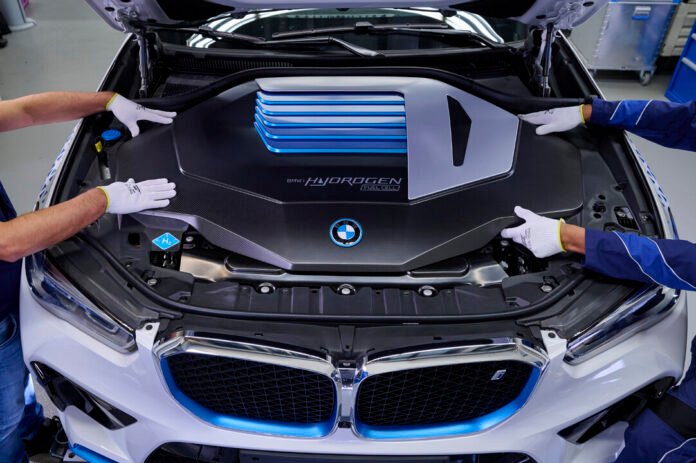Discover the Future of Eco-Friendly Driving: Everything You Need to Know About Hydrogen Fuel Cell Cars
Imagine being able to drive an eco-friendly vehicle while only stopping for a quick refuel! With hydrogen cars like the BMW iX5 Hydrogen, this futuristic scenario is already a reality. But how exactly do hydrogen cars operate? What is a fuel cell system, and what benefits and challenges does this innovative technology present? Let’s dive into the essential answers to these burning questions.
1 - How Do Hydrogen Cars Work?
Hydrogen cars are classified as electric vehicles (EVs) since they are powered by an electric motor. Known as Fuel Cell Electric Vehicles (FCEVs), they differ from Battery Electric Vehicles (BEVs), which rely on rechargeable batteries.
The key distinction lies in the way energy is produced: hydrogen cars generate their own electricity. Instead of being powered by a built-in battery, these vehicles have an efficient power plant onboard that converts hydrogen stored in their fuel tanks into electricity, thanks to a fuel cell.
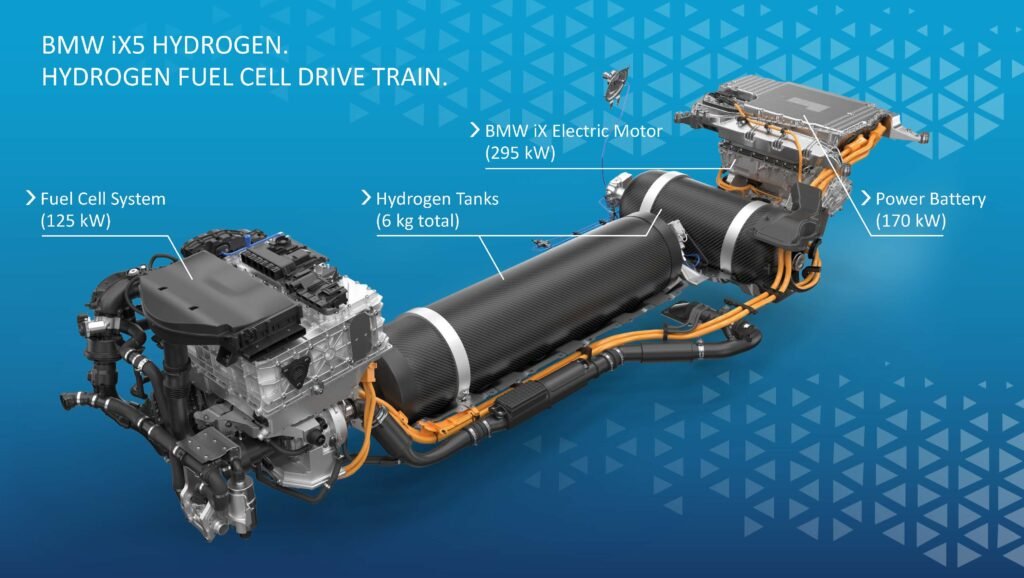
This process, called reverse electrolysis, occurs within the fuel cell. Hydrogen from the vehicle’s tank reacts with oxygen from the air, creating electrical energy, heat, and water. The only byproduct? Clean water vapor—meaning zero harmful emissions.
The electricity generated gets directed to either the electric motor, propelling the car forward, or to a smaller battery that stores energy for later use. This buffer battery is considerably lighter than those used in all-electric vehicles, and it is continuously recharged by the fuel cell.
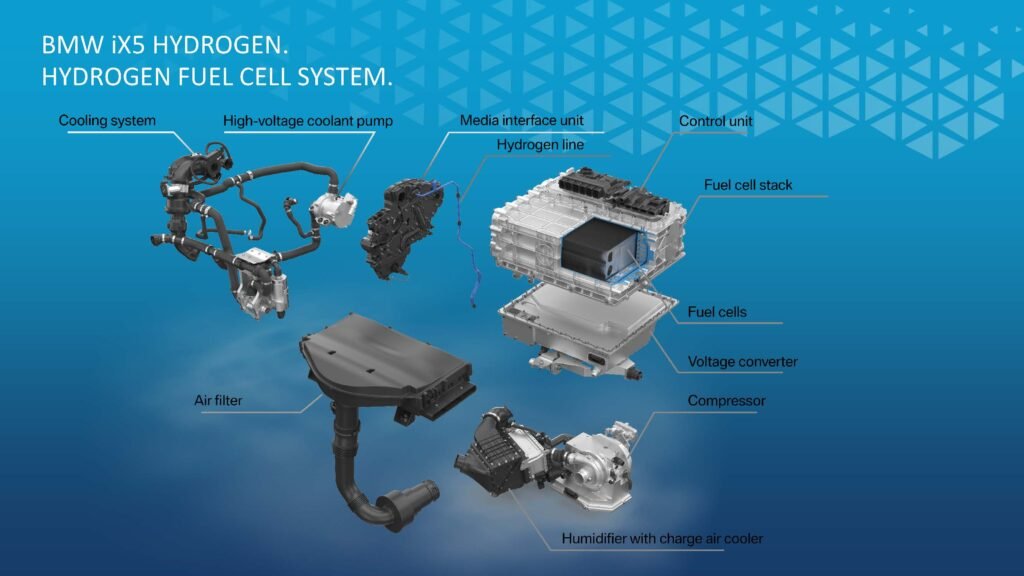
Similar to other EVs, hydrogen cars can also capture kinetic energy during braking. As the car slows down, the electric motor converts this energy back into electricity, feeding it into the buffer battery for later use.
2 - The Benefits and Promise of Hydrogen Cars
Hydrogen cars provide a driving experience that mirrors their all-electric counterparts, with silent and dynamic acceleration thanks to electric motors that deliver full torque immediately.
One standout advantage of hydrogen vehicles is their swift refueling time: refilling a BMW iX5 Hydrogen’s tank takes just three to four minutes, significantly less than the charging times for battery-electric vehicles. This convenience brings the flexibility of traditional gasoline cars to the eco-friendly driving experience.
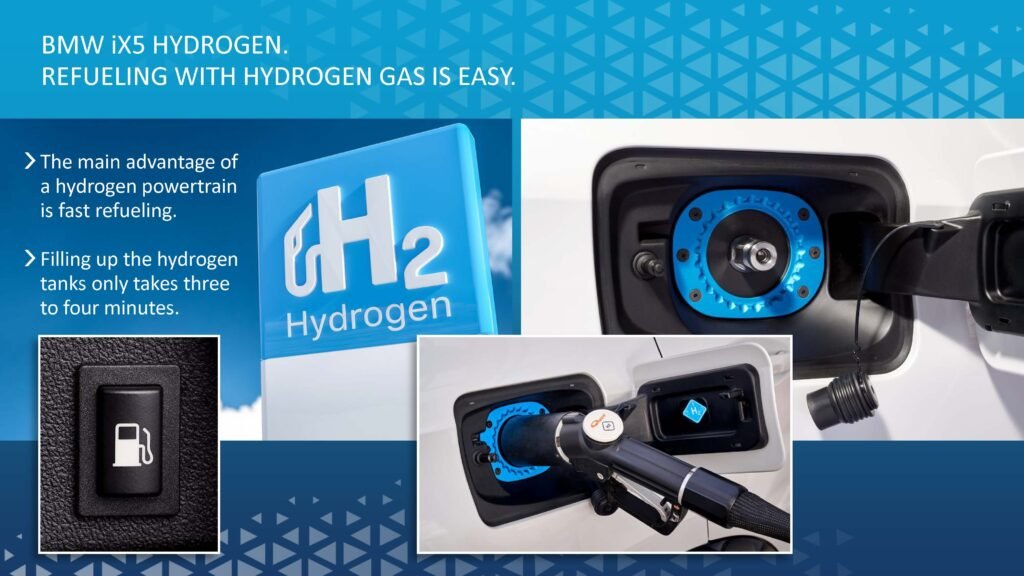
Range is another strong point—one hydrogen refill on a BMW iX5 Hydrogen covers an impressive 504 kilometers, unaffected by external temperatures. Furthermore, as the demand for electric charging stations grows, developing hydrogen infrastructure will support the wider adoption of clean transportation.
FCEVs and BEVs both utilize electric drives, but they store energy differently. This means that promoting hydrogen vehicles can benefit both fuel cell and battery technologies, helping to reduce costs in the long run.
3 - Understanding the Cost of Hydrogen Cars
Currently, the limited number of hydrogen models available on the market is priced higher than comparable battery-powered or conventional vehicles. Several factors contribute to these higher costs: the production process is not yet fully industrialized, and the demand for platinum—essential in electricity generation—plays a role. Fortunately, the amount of platinum needed for fuel cells has significantly decreased, and recycled platinum is increasingly being reintegrated into production cycles.
Additionally, low production volumes are a temporary hurdle. Hydrogen technology’s versatility across various sectors, including commercial vehicles and trains, suggests that increased production may lead to reduced costs. Notably, hydrogen cars show less raw material dependence compared to BEVs.
Both acquisition and operating costs influence the economic viability of hydrogen cars. Currently, hydrogen fuel costs around €14 per kilogram, with a fuel cell vehicle traveling approximately 100 kilometers on that amount. As global hydrogen production ramps up—expected to lower prices to between €4 and €6 per kilogram by 2030—operating costs for hydrogen cars could become more competitive.
4 - Evaluating the Environmental Friendliness and Sustainability of Hydrogen Cars
From an ecological perspective, an ideal vehicle would solely utilize renewable energy and emit no harmful substances. How close do hydrogen fuel cell cars get to this ideal compared to other vehicle types?
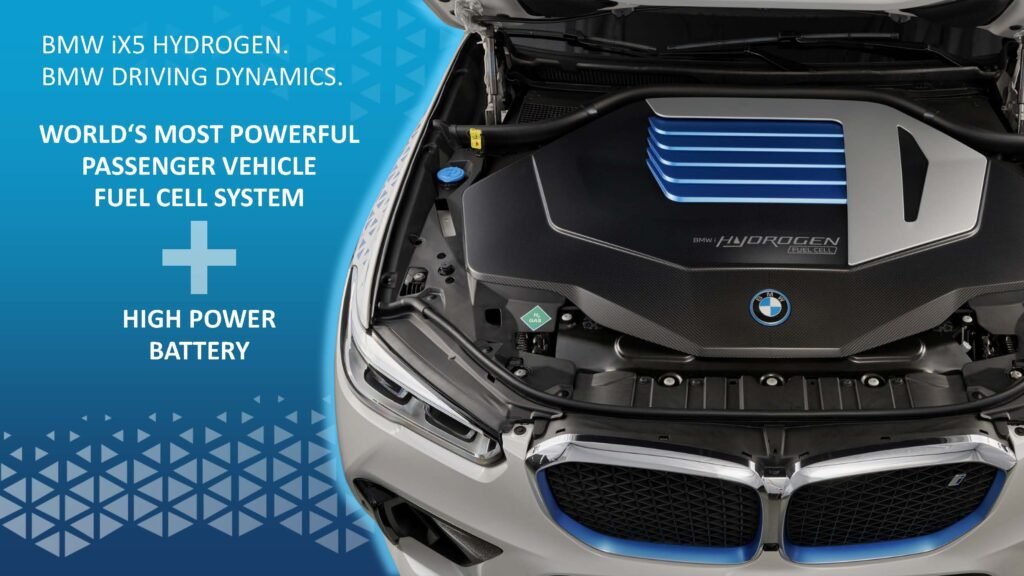
- By law, alternative drives must reduce emissions of pollutants such as CO2 and nitrogen oxides. Hydrogen cars have an edge here; their exhaust is only water vapor, contributing to cleaner air in urban environments. However, their overall climate impact hinges on how the hydrogen is produced.
- Producing hydrogen requires electrical energy, and the carbon footprint varies significantly based on the electricity source. If renewable energy powers the process, hydrogen production is effectively carbon-neutral. In contrast, using fossil fuels during production can lead to a negative environmental impact, similar to other electric vehicles.
- Hydrogen production does involve energy loss during electrolysis, currently resulting in about half the efficiency of BEVs. However, when considering the full lifecycle of both types of vehicles, they are closer in terms of environmental impact than one might assume.
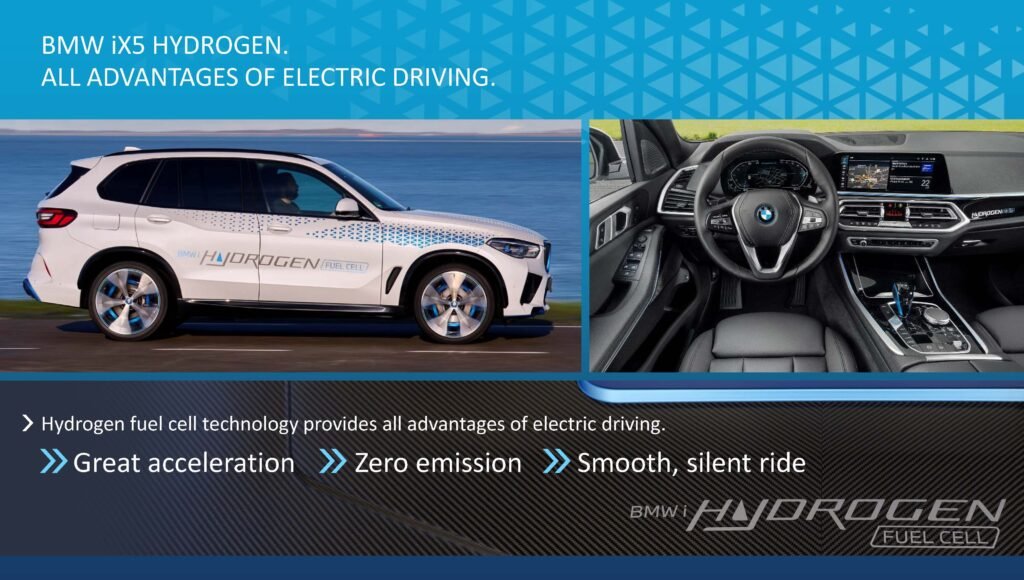
- Hydrogen can also be generated during periods of excess electricity from renewable sources, providing a sustainable solution to utilizing surplus energy. Moreover, hydrogen is often a by-product of industrial processes, which could be better harnessed rather than discarded.
- With ongoing efforts in carbon capture and storage (making “blue” hydrogen possible from fossil fuel processes), as well as advancements in transport and storage complexities, the future of hydrogen drives holds promise. Hydrogen can be produced anywhere with access to electricity and water, potentially shortening transportation distances.
In summary, hydrogen drives can enable environmentally sustainable mobility, but achieving their full potential relies on utilizing renewable energy for hydrogen production and enhancing infrastructure to facilitate efficient transport routes.


